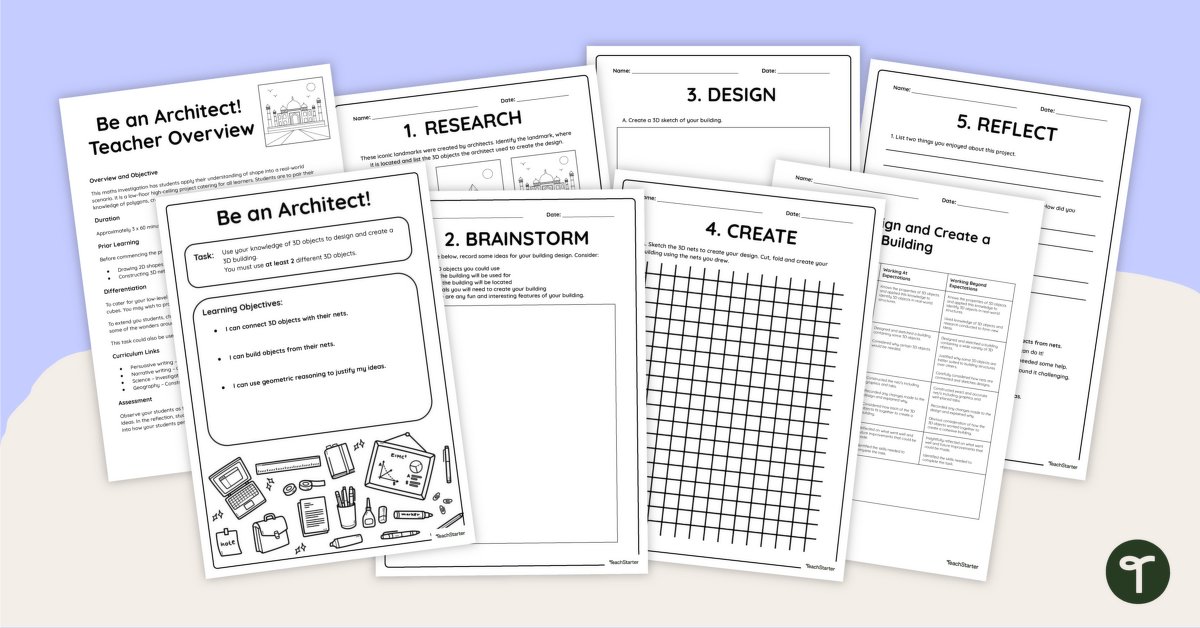Relate knowledge of 3D objects to the real world with this student-led mathematics project.
Why Apply Maths Skills to Real-World Scenarios?
Show your students how their maths knowledge can be applied to the real world with an open-ended maths investigation!
Linking the content of the maths curriculum to the world in which they live can help students see the relevance of mathematics in their lives.
Open-ended tasks also provide wonderful opportunities for differentiation, enabling students to feel confident and successful as they engage with tasks at their own individual level.
Design and Create a 3D Building
This task requires students to use their knowledge of 3D objects to design and create a 3D building. They must use at least two different 3D objects.
Throughout the investigation, the students will:
- Research iconic landmarks from around the world and identify the 3D objects within each landmark.
- Brainstorm ideas for their building design, considering:
- the 3D objects they could use
- what the building will be used for
- where the building will be located
- materials they will need to create their building
- any fun and interesting features.
- List the 3D objects needed to create the building.
- Sketch the building design.
- Sketch the nets of the 3D shapes required for the building design.
- Create the building by cutting and folding the nets.
- Reflect on their learning.
What Is Included in This 3D Objects Maths Investigation?
You’ll find everything you need to implement this 3D objects project in the comprehensive student workbook. The workbook contains the following:
- Teacher notes, detailing a range of important information about the investigation
- A description of the investigation for students, including learning objectives
- Various planning worksheets and templates
- Reflection questions
- A sample marking rubric
Download to Get Started!
Access the student workbook via the Download button at the top of the page. Use the dropdown arrow to select between the editable Google Slides file or the easy-print PDF.
To save paper, we recommend printing the workbook as a double-sided document.
As the download includes teacher notes, we recommend printing one copy of the document, then separating the student worksheets for photocopying.
This resource was created by Allanah Arrowsmith, a Teach Starter collaborator.
Click below for more time-saving 3D nets resources!

teaching resource
3D Objects and Nets - Interactive Activity
Explore the connection between 3D objects and their nets with this engaging digital activity.

teaching resource
3D Objects and Their Nets - Teaching Presentation
Explore the connection 3D objects have with their nets and other 2D representations with this comprehensive set of teaching slides.

teaching resource
3D Objects and Their Nets - Matching Game
Connect the names, models and nets of three-dimensional objects with this hands-on matching game.


0 Comments
Write a review to help other teachers and parents like yourself. If you'd like to request a change to this resource, or report an error, select the corresponding tab above.